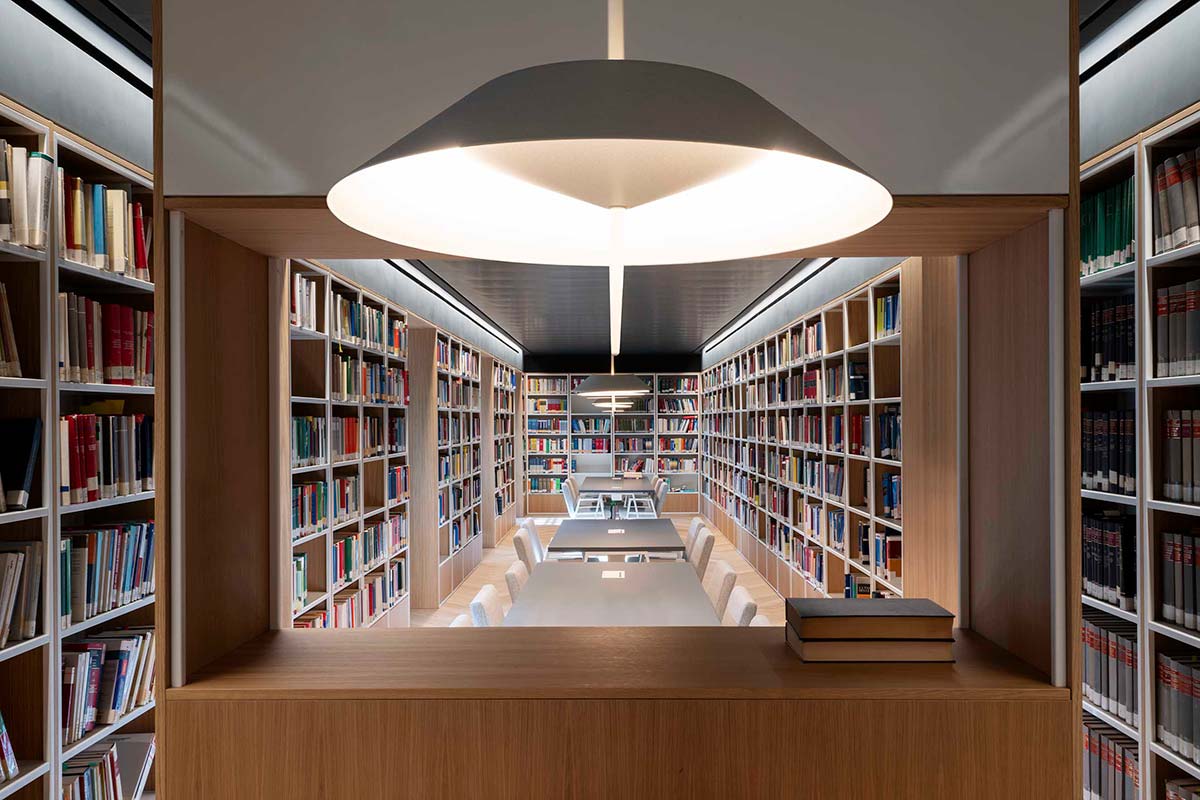This is a moment of reflection for the designers of offices, such as Lombardini 22 and DEGW, Open Project, Park Associati and Progetto CMR. They are developing a vision of the future of workspace, sharing various aspects. The pandemic has changed many things, including our ways of working, and designers are addressing this flux with different solutions, always relying on all their experience and their typical ability to see beyond, understanding that the main ingredient of transformation is flexibility.
Designing hybrid spaces

Alessandro Adamo, Partner of Lombardini22 and Director of DEGW, talks about the coexistence of home and office work: “While we have seen that it is possible to work without going to the office, we have also understood how important it is to have a physical and symbolic space in which to gather. I am thinking about an immersive, empathic and reconfigurable office, a sort of technological set design in constant movement, where individuals can feel at ease. The key word is still flexibility: offices are multitasking and versatile places, simultaneously serving multiple functions.”

The central role of human beings in workspace is an indispensable condition for Francesco Conserva of Open Project: “The fundamental objective of the offices we are building today for tomorrow is to put the employee experience at the center, focusing on the quality of spaces and creating a fluid, hybrid environment that rapidly adapts to changes. The new offices will increasingly resemble domestic spaces, because they will have a more social function: lounge areas with armchairs and wired tables, flash meeting spaces on foot and flexible products that are easy to move and recombine for operative workstations, adapting to various requirements of comfort and user needs. The materials of these products will play an important role: they have to be easy to sanitize, and sustainable.”

Also for Park Associati, the workspace has to become ‘liquid’: “We do not think that smart working will prevail over office work, but we are seeing an interesting development of workplaces as spaces capable of changing over time, and during the course of the day. Products will be needed that respond to needs for flexibility, such as modular solutions. Transparency and privacy can coexist in workspaces thanks to high-tech materials.”

Massimo Roj, CEO of the design firm Progetto CMR, talks about how he sees the office of the future: “There will be what I call external work centers, a format we are imagining as a place of aggregation, also based on productive specializations and forms of expertise, be they artisanal or digital-technological. I believe co-working can become a point of aggregation of people working in neighborhoods. From working space to living place, this is the transformation in progress. Work has to become smart, as do its spaces and furnishings.”
When change takes form
Delving deeper, the designers of the four studios illustrate the products that will bring definition to the workspaces they design. The firm Lombardini22 and DEGW is thinking about advanced solutions for acoustics, lighting and ergonomics found on the market today, and used in projects like the offices of JTI, Agos, EY in Rome and Facile.it. They are convinced that companies are working well on the essential themes of comfort and personal wellbeing.
The design of workspace, according to Open Project, is connected first of all to continuous dialogue with those who spend time in the facilities, with the company, its employees, its managers and visitors, as in the Evo Bonfiglioli Riduttori project in the province of Bologna. All this is interpreted by outstanding sector companies, ready to respond to the needs of clients: Pedrali, Fantoni, Forum Progetti, Paolo Castelli, Billiani, Estel, Tecno, Zumtobel and Davide Groppi, just to name a few.

Technical lighting choices are a very important factor for wellbeing in the workplace, in the projects of Park Associati. Together with 3F Filippi, they have recently developed a lighting system applied in the international law offices of Allen & Overy in Milan. The system is called 3F HD and stems from the desire for innovation in office lighting, a true necessity given the growing demand for energy savings, visual comfort and LEED and WELL certifications.
Progetto CMR, thinking about figure workspaces, and those recently completed such as the Progetto CMR headquarters, the Huawei showroom, the offices of Prima Assicurazione and those of Munich Re, talk about many products of their own design, such as the Be. 1 system of Frezza and Seventy Seven by CUF Milano, Privée, the line of chairs and sofas with sound-absorbing canopies produced by Ares Line, and Phonewalk designed for Citterio; the Fly_Air seating for lounge areas by Poltrona Frau Group (Lifestyle Design) and the Lead executive chairs produced by Las Mobili. Revo is a system of tables for the office designed for Manerba, to respond to all new needs of domestic spaces in a very versatile way, while Eggboard is a system of sound-absorbing lighting fixtures designed by Artemide.




















